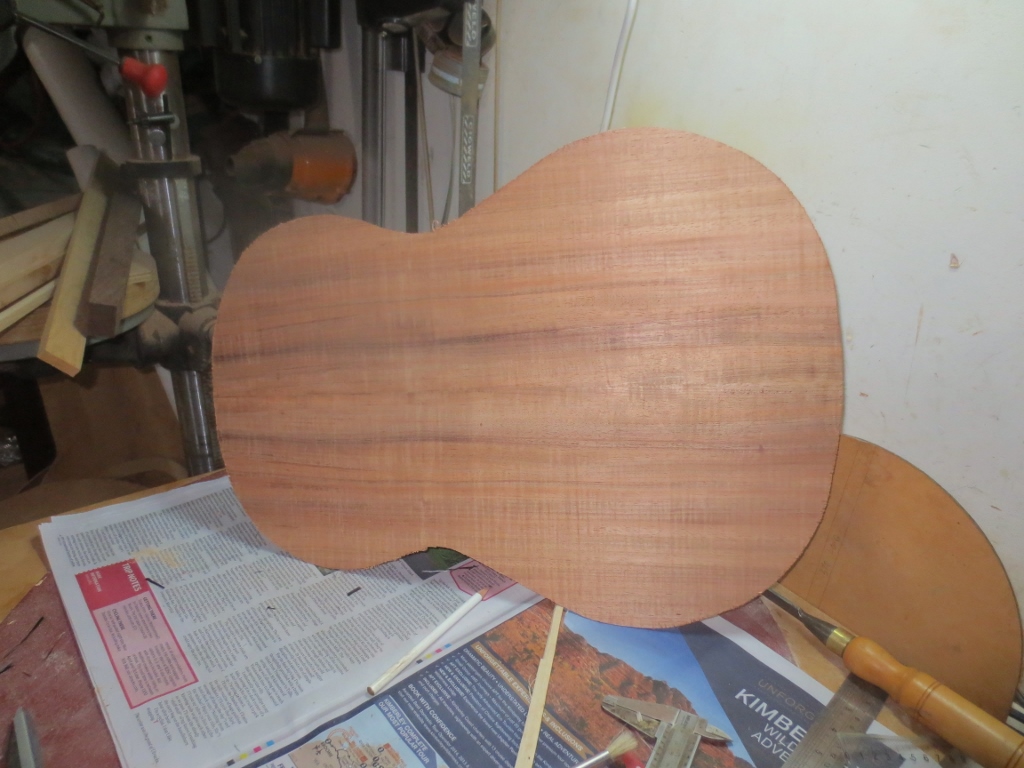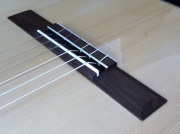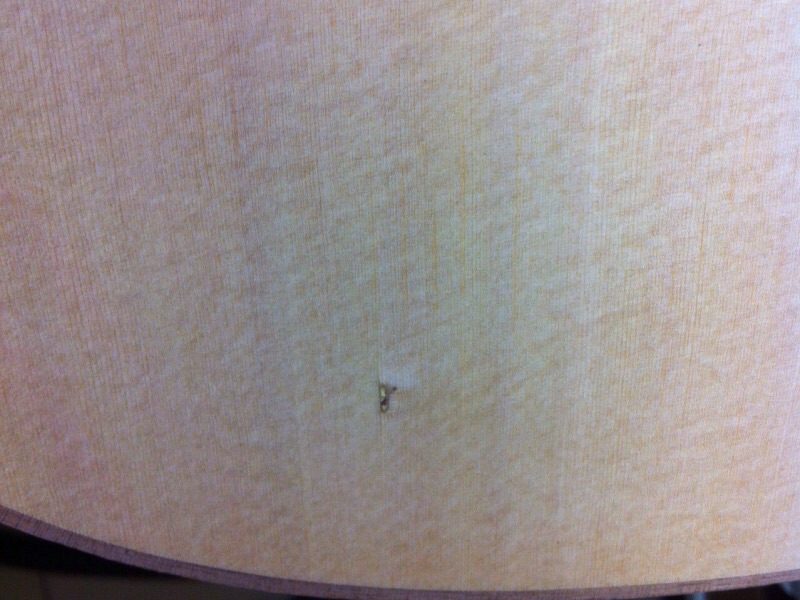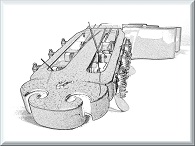Welcome to one of the most active flamenco sites on the Internet. Guests can read most posts but if you want to participate click here to register.
This site is dedicated to the memory of Paco de Lucía, Ron Mitchell, Guy Williams, Linda Elvira, Philip John Lee, Craig Eros, Ben Woods, David Serva and Tom Blackshear who went ahead of us.
We receive 12,200 visitors a month from 200 countries and 1.7 million page impressions a year. To advertise on this site please contact us.
|

|
|
RE: Rough tuning a guitar
|
You are logged in as Guest
|
|
Users viewing this topic: none
|
|
Login  | |
|

   
mqbernardo
Posts: 47
Joined: Mar. 26 2012

|
 RE: Rough tuning a guitar (in reply to estebanana) RE: Rough tuning a guitar (in reply to estebanana)
|
|
|
Hello, sorry about perpetuating this off-topic discussion but just wanted to add something on the pau ferro / caviuna thing estebanana was talking about.
There is indeed a lot of confusion amongst tree names, part of it is related to spurious branding, some to light-headed trading, part of it a lost-in-translçation thing. But things were complicated in the first place as when the first Europeans arrived, there were already different names for the same trees and different trees for the same names within different indian populations. Then these names entered to two different colonizing languages (castellano and portuguese) and sprung off, all well before good old uncle Linnaeus came in to help.
So pau ferro is just portuguese for iron wood. Usually it´s a name given to Machaerium scleroxylon (Santos / Bolivian rosewood). But in bolivia they call it Morado (spanish for purple) and in paraguay it´s guasu. As for Brazil, they preferably use the name "pau ferro" for Caesalpinia ferrea and tend to call M. scleroxylon caviuna/cabiuna. Caviuna comes from the tupi language group and roughly means "dark wood" or "dark bark" or "dark group of trees". -una is the tupi/guarany suffix for black/dark and in fact some indians called the 1st negro slaves they saw cabiuna (dark bark). But caviuna is also an unbrella word for any dark wood / dark tree - so brazilian rosewood is also called caviuna. So, to distinguish them (specially on the zones where Brazilian RW is indigenous) sometimes M. Scleroxylon is called red-caviuna, or jacaranda-caviuna, or pau-ferro-do-cerrado and Brazilain rosewood is called caviuna-negra (black caviuna). Confusingly, jacaranda is also the name for brazilian rosewood (and other trees) - it´s also form tupi origin and roughly transaltes to "thing with a hard center".
Machaerium villosum is also called pau-ferro in some regions of brazil. Manikara (massaranduba) is also sometimes called pau-ferro but i guess it´s trade name is "bullet wood", although i´ve seen it being sold as Brazilwood, which is also a name for pernambuco... It gets tiresome...
Sorry to have gotten carried away, as some might have guessed this is a pet-peeve of mine.
cheers,
Miguel.
|
|
|
|
REPORT THIS POST AS INAPPROPRIATE |
Date Nov. 6 2014 10:18:32
 |
|

   
mounirben
Posts: 43
Joined: Sep. 12 2013

|
 RE: Rough tuning a guitar (in reply to Anders Eliasson) RE: Rough tuning a guitar (in reply to Anders Eliasson)
|
|
|
Dear Anders,
Roy Courtnall in his book talks about this, I quote :
A common view is that the central area, where the bridge is fixed, should be the thickest, as the pull of the strings is greatest. The periphery can be taken thinner, except that the treble side of the lower bout is often thicker than the bass side. The idea is that strong treble notes are produced from a more substantial area of wood, whereas vibrant basses can be best achieved from a thinner area. Some makers, however, prefer a more unified symmetrical approach, and maintain the same thickness throughout. The choice must be based on your own feeling abour the soundboard you are using, as well as your vision of the ideal instrument
 Attachment (1) Attachment (1)
|
|
|
|
REPORT THIS POST AS INAPPROPRIATE |
Date May 3 2015 22:00:34
 |
|

   
Ricardo
Posts: 14822
Joined: Dec. 14 2004
From: Washington DC

|
 RE: Rough tuning a guitar (in reply to mqbernardo) RE: Rough tuning a guitar (in reply to mqbernardo)
|
|
|
quote:
ORIGINAL: mqbernardo
Hello, sorry about perpetuating this off-topic discussion but just wanted to add something on the pau ferro / caviuna thing estebanana was talking about.
There is indeed a lot of confusion amongst tree names, part of it is related to spurious branding, some to light-headed trading, part of it a lost-in-translçation thing. But things were complicated in the first place as when the first Europeans arrived, there were already different names for the same trees and different trees for the same names within different indian populations. Then these names entered to two different colonizing languages (castellano and portuguese) and sprung off, all well before good old uncle Linnaeus came in to help.
So pau ferro is just portuguese for iron wood. Usually it´s a name given to Machaerium scleroxylon (Santos / Bolivian rosewood). But in bolivia they call it Morado (spanish for purple) and in paraguay it´s guasu. As for Brazil, they preferably use the name "pau ferro" for Caesalpinia ferrea and tend to call M. scleroxylon caviuna/cabiuna. Caviuna comes from the tupi language group and roughly means "dark wood" or "dark bark" or "dark group of trees". -una is the tupi/guarany suffix for black/dark and in fact some indians called the 1st negro slaves they saw cabiuna (dark bark). But caviuna is also an unbrella word for any dark wood / dark tree - so brazilian rosewood is also called caviuna. So, to distinguish them (specially on the zones where Brazilian RW is indigenous) sometimes M. Scleroxylon is called red-caviuna, or jacaranda-caviuna, or pau-ferro-do-cerrado and Brazilain rosewood is called caviuna-negra (black caviuna). Confusingly, jacaranda is also the name for brazilian rosewood (and other trees) - it´s also form tupi origin and roughly transaltes to "thing with a hard center".
Machaerium villosum is also called pau-ferro in some regions of brazil. Manikara (massaranduba) is also sometimes called pau-ferro but i guess it´s trade name is "bullet wood", although i´ve seen it being sold as Brazilwood, which is also a name for pernambuco... It gets tiresome...
Sorry to have gotten carried away, as some might have guessed this is a pet-peeve of mine.
cheers,
Miguel.
Great post. It falls in line with what my bolivian indian friends have told me in the past. I once saw a "caviuna" guitar that to me was clearly brazil rosewood...caviuna was hand written on the label...I was thinking it was a desperate attempt to make the guitar seem legit cuz the wood on back and sides was surely illegal for it's year. Pau fero guitars (bolivian RW) never really did it for me...soundwise. E. Indian is the best IMO for negras.
Going back to bridges earlier, just would like to add I have Jernoimo Peña negra and the bridge and face plate must be ebony. It's pitch black like the fingerboard. The sound is very strong and bright.
_____________________________
CD's and transcriptions available here:
www.ricardomarlow.com
|
|
|
|
REPORT THIS POST AS INAPPROPRIATE |
Date May 4 2015 16:07:42
 |
|

   
Ricardo
Posts: 14822
Joined: Dec. 14 2004
From: Washington DC

|
 RE: Rough tuning a guitar (in reply to keith) RE: Rough tuning a guitar (in reply to keith)
|
|
|
quote:
ORIGINAL: keith
One method for determining D. nigra from other dalbergias is the test explained in the link. It is an invasive test. The wood database site has a boatload of info on wood. The first link is the test, the second link is the home page of the wood database.
As for labeling strategies, I believe it was in 2006 or 2007 that GSI began listing a lot of their rosewood guitars as CSAR. Prior to this change I recall wood dealer in Spain getting busted for illegal D. nigra. I would imagine the use of CSAR (Central South America Rosewood) is an attempt to skirt the BRW laws but I really wonder if the BRW police fall for such labels.
As to Pernambuco and Brazilwood, it is my understanding from many in the violin world that the two woods are the same species but Brazilwood is the less desirable part of the tree and Pernambuco is the more desirable part of the tree--at least in the bow making business.
http://www.wood-database.com/wood-articles/distinguishing-brazilian-rosewood-from-east-indian-and-other-rosewoods/
http://www.wood-database.com/
If you browse any catalogue of vintage guitars, you find all the negras labeled as "indian rosewood" OR "brazilian rosewood"... and that's it really. Unless some obvious derivation such as maple, cypress, walnut etc. I always wondered since all the Indian examples look 100% identical, and the "brazilian" examples almost infinitely varied, if luthiers/wood dealers have been lazy about labeling specifics and just called anything that was NOT indian, "Brazilian RW" to make it easier for buyers?
How about this question...has any luthier on here ever built a guitar with tonewood they at first THOUGHT was something as they purchased it, only later to discover it was actually something ELSE entirely?
_____________________________
CD's and transcriptions available here:
www.ricardomarlow.com
|
|
|
|
REPORT THIS POST AS INAPPROPRIATE |
Date May 5 2015 13:26:05
 |
|

   
Richard Jernigan
Posts: 3430
Joined: Jan. 20 2004
From: Austin, Texas USA

|
 RE: Rough tuning a guitar (in reply to jshelton5040) RE: Rough tuning a guitar (in reply to jshelton5040)
|
|
|
After I moved into my house in Austin in 2010 I started looking around on the web for furniture. I found a place in Vancouver, Canada that had a good selection of Danish and Swedish stuff from the 1960s-70s that promised to fit in with the "Mid-Century Modern" style of the house. I went to Vancouver and picked out some.
The desk I am sitting at now is teak, as are the coffee table and end tables in the living room. The dining room sideboard, table and chairs are "Brazilian rosewood." The sideboard has nice book matched veneer patterns on the doors and drawers, the 7-foot top and sides are from a single veneer sheet. The table and chairs are solid.
I asked the proprietor of the Vancouver store whether he had any trouble with U.S. Customs over the Brazilian rosewood. He said they load up a van with furniture and drive to Washington state to ship in the USA. They had one van load impounded a couple of years before, with U.S. Customs citing it as Brazilian rosewood. The furniture dealer hired a U.S. lawyer, who retained a noted wood expert from academia. The professor proved that the wood was not Dalbergia Nigra. It was some other species of rosewood from South America. The stuff I have looks like Brazilian to me, but ¿Quién sabe?
U.S. Customs gave the dealer back his van and furniture, and he hadn't had any problems since.
Recently I have been looking for a big armoire to convert to a cabinet for my printers, scanners, etc. I haven't seen either a "Brazilian" or a teak armoire on the net for months, but there have been smaller "Brazilian" pieces.
The Vancouver dealer said they buy all their stuff at auctions in Denmark, fill up a container and ship it to Canada.
RNJ
|
|
|
|
REPORT THIS POST AS INAPPROPRIATE |
Date May 5 2015 16:27:31
 |
|
 New Messages New Messages |
 No New Messages No New Messages |
 Hot Topic w/ New Messages Hot Topic w/ New Messages |
 Hot Topic w/o New Messages Hot Topic w/o New Messages |
 Locked w/ New Messages Locked w/ New Messages |
 Locked w/o New Messages Locked w/o New Messages |
|
 Post New Thread
Post New Thread
 Reply to Message
Reply to Message
 Post New Poll
Post New Poll
 Submit Vote
Submit Vote
 Delete My Own Post
Delete My Own Post
 Delete My Own Thread
Delete My Own Thread
 Rate Posts
Rate Posts
|
|
|
Forum Software powered by ASP Playground Advanced Edition 2.0.5
Copyright © 2000 - 2003 ASPPlayground.NET |
0.109375 secs.
|


 Printable Version
Printable Version

















 New Messages
New Messages No New Messages
No New Messages Hot Topic w/ New Messages
Hot Topic w/ New Messages Hot Topic w/o New Messages
Hot Topic w/o New Messages Locked w/ New Messages
Locked w/ New Messages Locked w/o New Messages
Locked w/o New Messages Post New Thread
Post New Thread